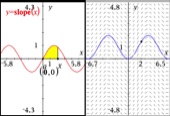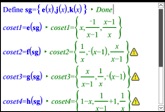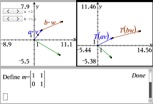Douglas A. Lapp, Ph.D.
Professor of Mathematics and Mathematics Education
Central Michigan University
Math 107: College Algebra, MWF, 12:00-12:50 pm, PE 137
Math 261: Algebra for Secondary Teachers, MW, 2:00-3:15 pm, PE 224
SCI 215: Communication in STEM Fields, TTh, 12:30-1:45 pm, Dow 108
Office Hours (Pearce Hall 222):
Monday: 9:00-10:00 am
Tuesday: 10:00 am-11:00 am & 2:00-3:00 pm
Thursday: 2:00-3:00 pm
and by appointment.
You can also join virtually in Teams using join code nm0jbf6.
Selected Papers
Lapp, D.A., Marcinek, T., & Lapp, S. (2023). Active learning and the Pythagorean Theorem through dynamic geometry and robotic optimazation: The case of Kaitlyn. In C. Martin, Polly, D., & Miller, B. (Eds.), Technology Integration and Transformation in STEM Classrooms. Hershey, PA: IGI Global.
Lapp, D.A. & St. John, D. (2015). Playing with perpendicular lines: The case of Laura. In D. Polly (Ed.), Cases on Technology Integration in Mathematics Education (pp. 100-120). Hershey, PA: IGI Global.
Lapp, D.A., Ermete, M., Brackett, N., & Powell, K. (2013). Linked representations in algebra: Developing symbolic meaning. Mathematics Teacher, 107(4), 306-312. (Click Here for additional materials related to the article.)
Nyman, M. A., Lapp, D. A., St. John, D., Berry, J. S. (2010). Those do what? Connecting eigenvalues and eigenvectors to the rest of linear algebra. The International Journal for Technology in Mathematics Education, 17(1), 33-42.
Lapp, D.A., Nyman, M., & Berry, J. (2010). Student Connections of Linear Algebra Concepts: An Analysis of Concept Maps. International Journal of Mathematical Education in Science and Technology, 41(1), 1-18.
Lapp, D.A. & St. John, D. (2009). Gifted and talented mathematics students: Perspectives from the USA. Mathematics in School, 38(3), 38-41.
Lapp, D.A. & St. John, D. (2009). Dynamically connected representations: A powerful tool for the teaching and learning of mathematics. The International Journal for Technology in Mathematics Education, 16(1), 37-44.
Berry, J. S., Lapp, D.A., & Nyman, M.A. (2008). Using technology to facilitate reasoning: Lifting the fog from linear algebra, Teaching Mathematics and Its Applications, 27(2), 102-111.
Manouchehri, A. & Lapp, D.A. (2003). Unveiling Student Understanding: The Role of Questioning in Instruction, Mathematics Teacher, 96(8), 562-566.
Lapp, D. A. & Cyrus, V. F. (2000). Using Data Collection Devices to Enhance Student Understanding, Mathematics Teacher, 93(6), 504-510.
St. John, D. & Lapp, D.A. (2000). Developing Numbers and Operations with Affordable Handheld Technology, Teaching Children Mathematics, 7(3), 162-164.
Lapp, D. A. (1999). Multiple Representations for Pattern Exploration with the Graphing Calculator and Manipulatives, Mathematics Teacher, 92(2), 109-113.
Lapp, D. A. & Moenk, S. J. (1999). Calculator-Based Laboratory Technology: What Does Research Suggest?, Presented at the 12th International Conference on Technology in Collegiate Mathematics, San Francisco, CA, 4-7 November 1999.
Lapp, D. A. (1999). Using Calculator-Based Laboratory Technology: Insights from Research, Presented at the Fourth International Conference on Technology in Mathematics Teaching, Plymouth, United Kingdom, 9-13 August 1999.
Lapp, D. A. (1997). A Theoretical Model for Student Perception of Technological Authority: Impact on Instruction, Presented at the Third International Conference on Technology in Mathematics Teaching, Koblenz, Germany, 29 September-2 October 1997.
Spring Semester 2024 Schedule




